Mongol Invasion
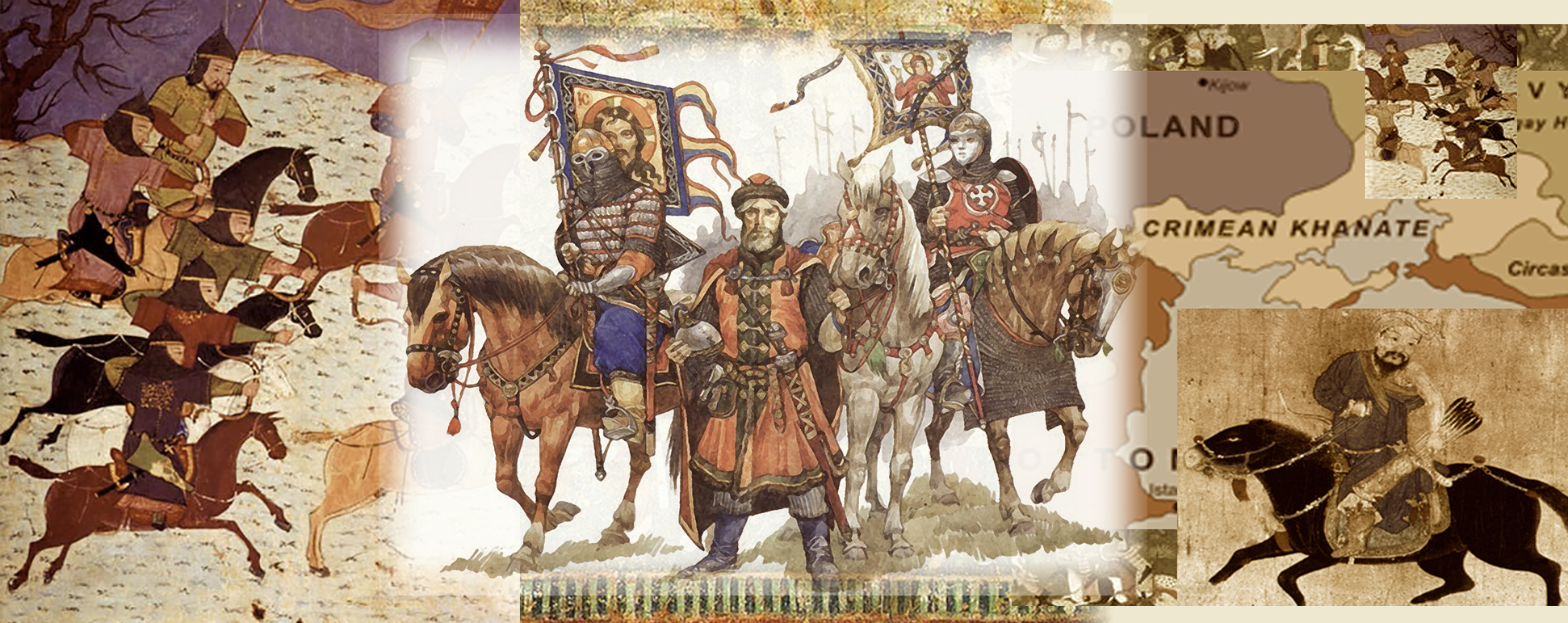
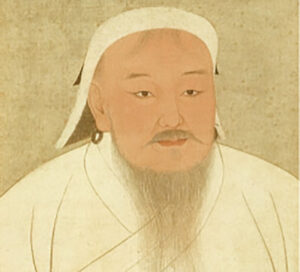
Mongol leader Genghis Khan (1162-1227) rose from humble beginnings –his mother had been kidnapped by his father and forced into marriage– to establish the largest land empire in history.
His son Jochi (1182-1227) was sent to conquer the lands of what is now Siberia, Central Russia, and Eastern Europe, where the Rus’ princes were at war with each other.
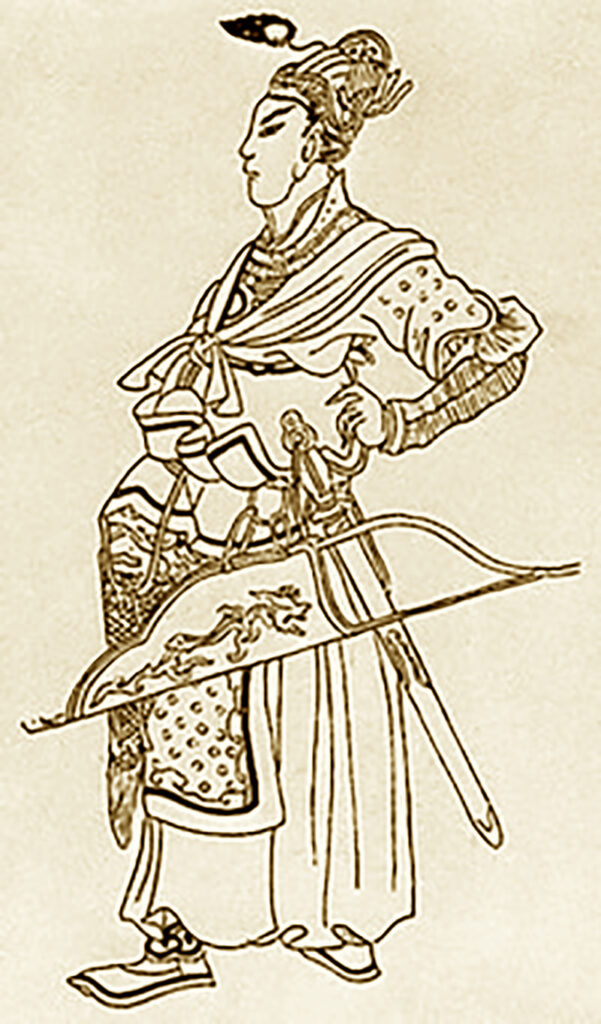
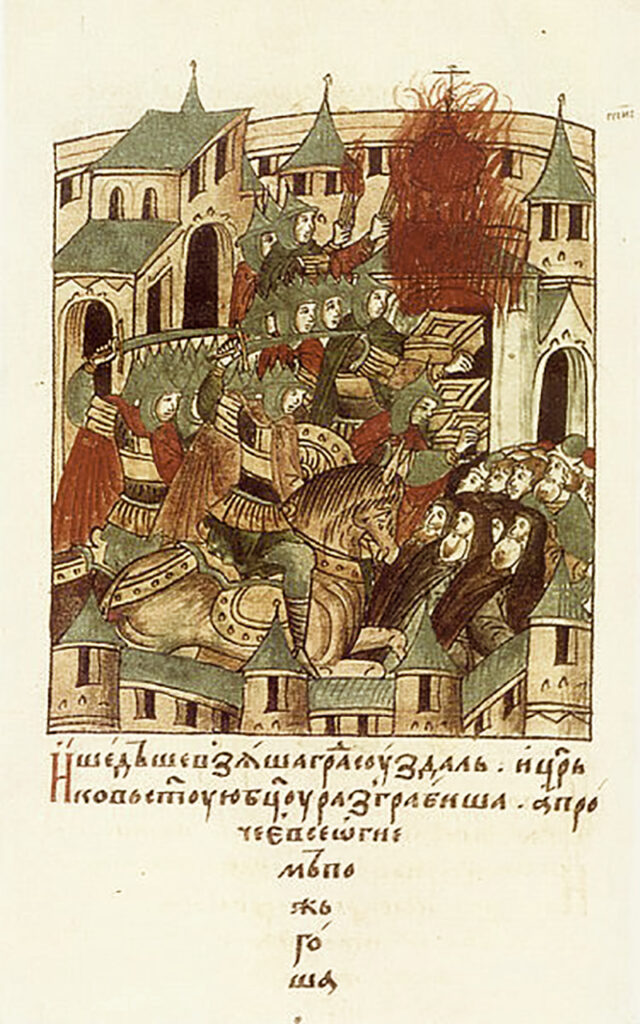
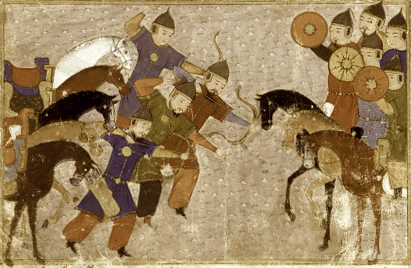
The Silk Road from China and Central Asia converged on the Golden Horde capital, Old and New Sarai, to Crimea. Subordinate routes crossed the steppe to Chernihiv, Kyiv, and Halych and westward to Central Europe. In the south, Galicia-Volhynia was the only Rus’ principality on Ukrainian territory to survive as an independent state.
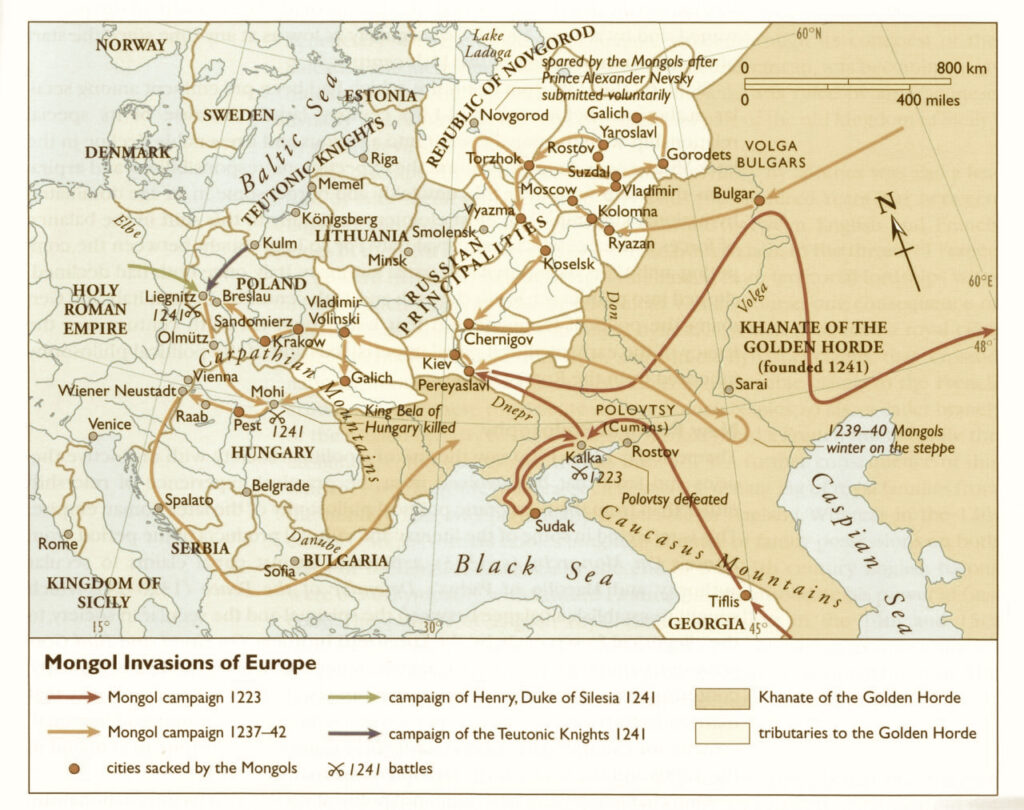

In 1237, led by Genghis Khan’s grandson, Batu Khan, the Mongols invaded Rus.’ After years of attacks, fierce battles and a siege lasting several weeks, Kyiv, Chernihiv, and Halych were burned to the ground in 1240.
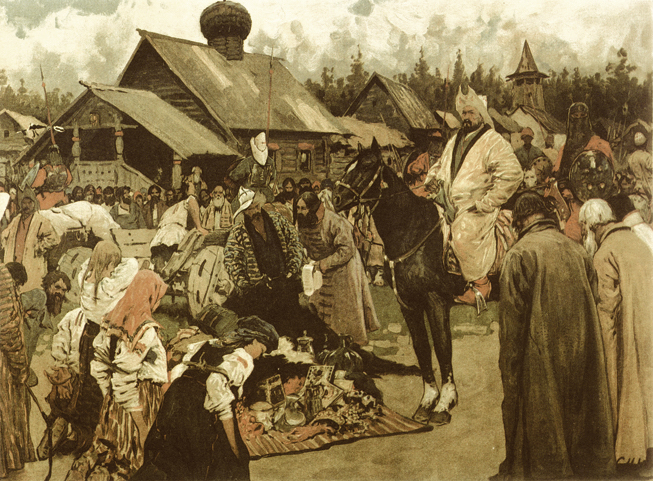
1243 Knyaz Yaroslav II (1191-1246) was summoned to Batu Khan and swore allegiance. The Mongols then surveyed the population to collect tributes. The tributes went to the Mongol Empire, and Prince Danylo Romanovych, like other princes of Rus, was forced to pledge allegiance to Batu Khan of the Golden Horde in 1246.
After 1266, when the Tatar-Mongol state of Golden Horde divided itself from the Mongols, tributes went to the Sultan Giyas al-Din Mohammed Öz Beg, known as Uzbeg or Ozbeg (1292–1341), the longest-reigning khan of the Golden Horde (1313–1341). Öz Beg’s army killed Lev II and his brother Andrey (the last of the Rurikid Dynasty) in 1323. Succeeding his father Öz Beg Khan, Jani Beg, also called Djanibek Khan, was a Khan of the Golden Horde from 1342 to 1357.
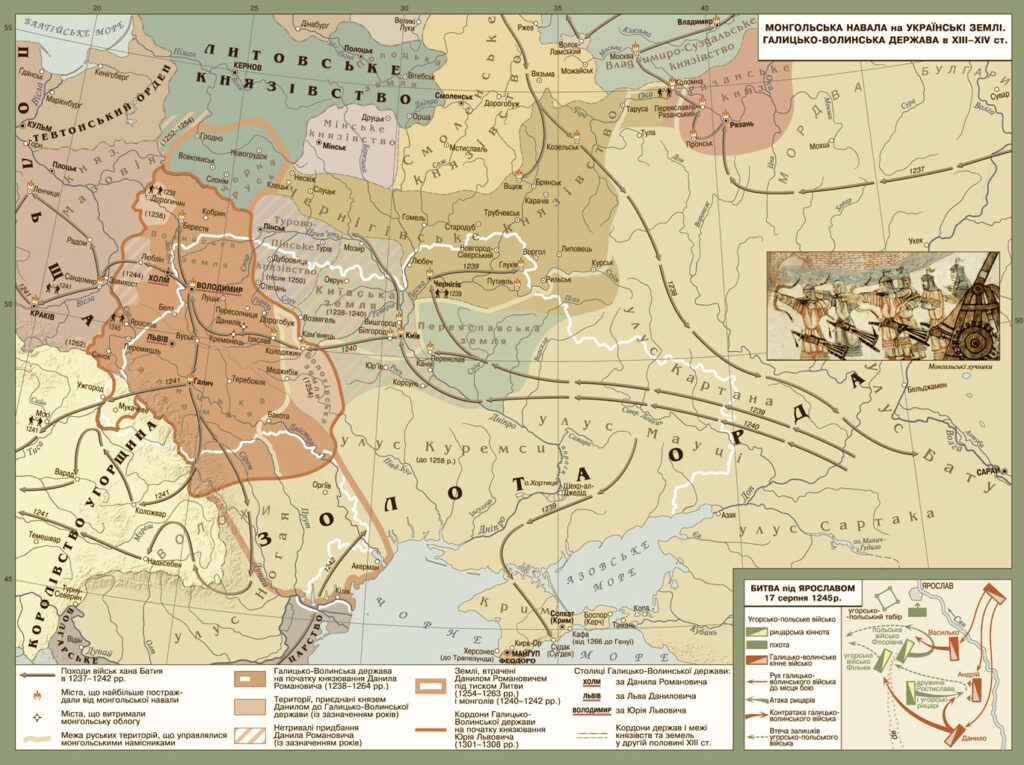
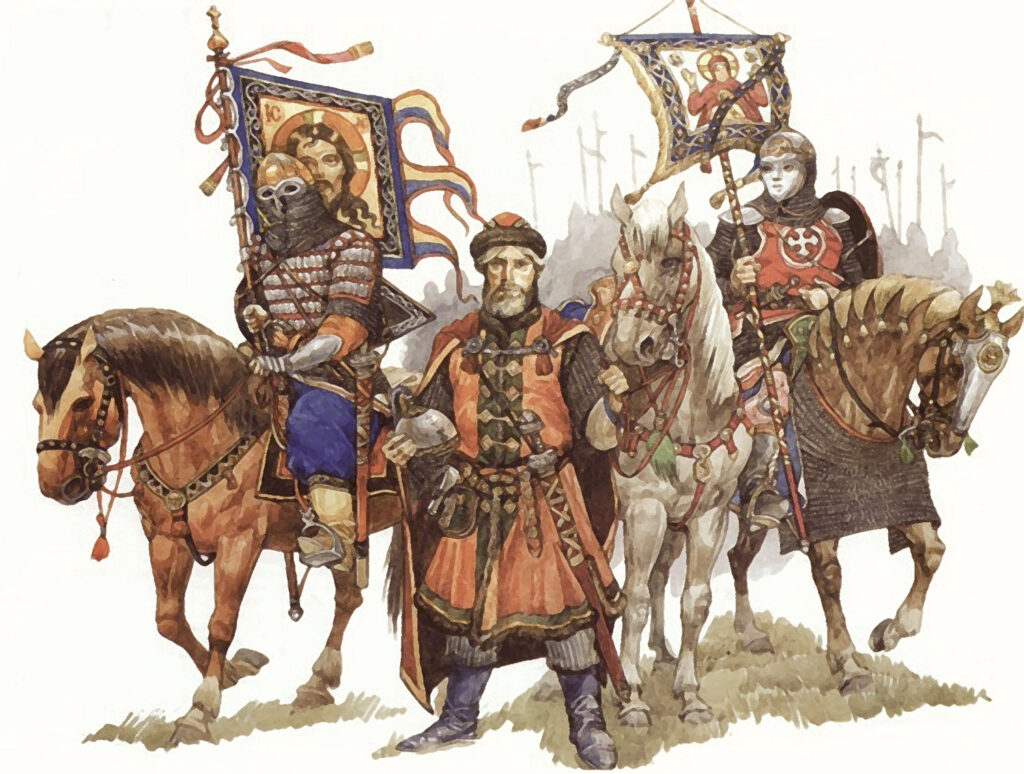
Source: The Mongols and the Transformation of Rus’ Political Life, History of Ukraine, Paul Robert Magocsi.